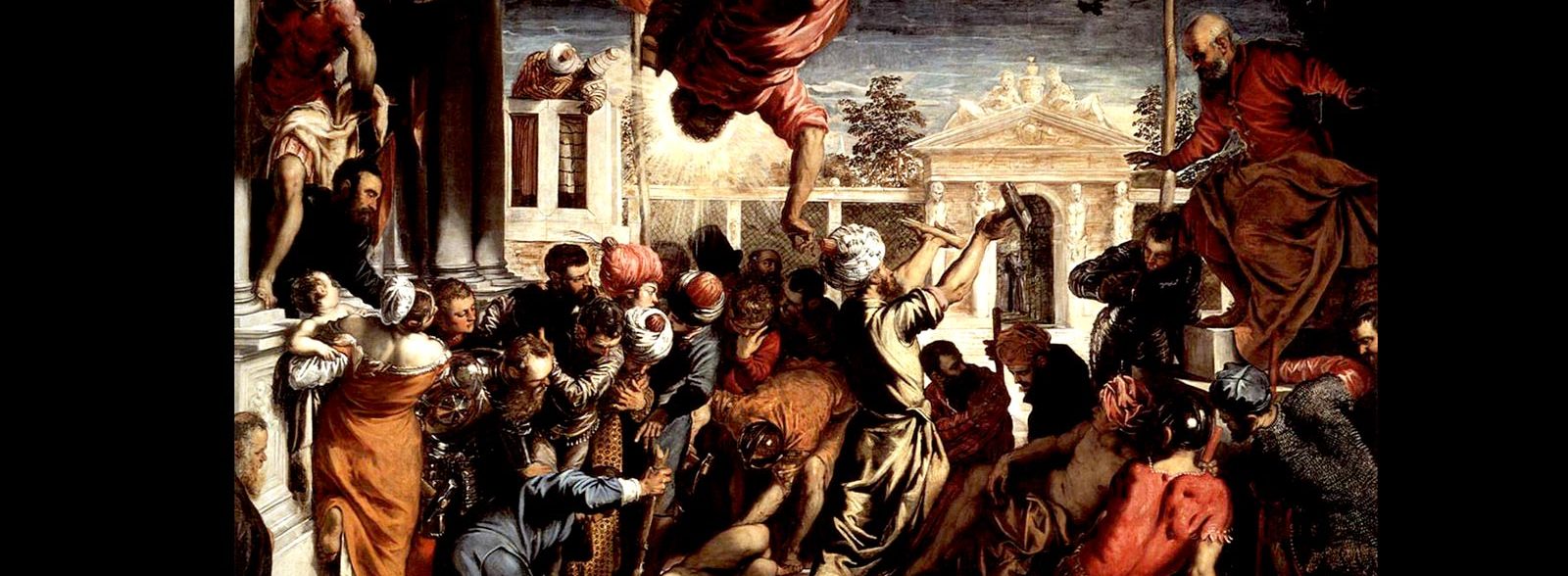Accademia Gallery of Venice: famous paintings to admire
The Accademia Gallery of Venice is one of the most visited Italian museums, and it houses an extraordinary collection of paintings that celebrate Venice and Venetian art.
It can be reached by vaporetto from the railway station in 15 minutes (line 1 or line 2 from the railway station to Lido – Accademia stop). The museum opens its doors early in the morning and has an online booking service to skip the endless queues in front of the ticket office.
Our staff will be happy to help you book your guided tour, they’ll also provide all the necessary information about the museum and its services.
Accademia Gallery of Venice: the history
Venice has always been considered one of the main art cities in Italy by artists and painters from all over the world. During the last century, the city was always full of young students eager for artistic knowledge, who traveled to the lagoon to admire the famous works of the great masters.
Initially, the gallery was sculpture, painting and civil architecture school: it collected the students’ works, but over the years, it became the perfect place to gather all the artistic masterpieces scattered around Venice. Year after year, the collection increased thanks to the abundant donations from Italian aristocratic families and nowadays, it counts more than 800 unique and authentic works by the most famous artists in the world.
Accademia Gallery of Venice: Tintoretto, the feeling of dynamism
If we were to combine Tiziano‘s use of color with Michelangelo‘s drawing ability, we would be able to describe the art of another great Venetian painter, Jacopo Robusti also known as Tintoretto(1519-1594).
The dynamism of Tintoretto’s paintings is the feature exalted in every his works: the desire to draw something that is not in front of the eyes but appears and disappears. Not physical things, but images in the mind.
Come inside, stop and admire his great oil on canvas painting il Miracolo dello schiavo (1548). The miracle occupies just a small part of the painting, which mainly portrays a crowd observing the scene with dismay.
The protagonist is the saint, who swoops down like a deus ex machina: an explosion of colors and light in the middle of the day that emphasises the miracle happening in the background. In this painting, Tintoretto achieves the emotional intensity typical of a dramatic performance, able to emerge from the canvas to the observer.
Other works by Tintoretto can be found in the beautiful rooms of the Palazzo Ducale and the Scuola Grande di San Rocco in Venice, as well as in the most famous international museums: from the National Gallery in London to the Musée du Louvre in Paris.
Accademia Gallery of Venice: Veronese, the exponent of the Venetian society
Paolo Caliari, known as Veronese (1528-1588), was also a Mannerist painter like his famous colleague, Jacopo Tintoretto: both of them celebrate the glory of Venice and the lifestyle of the Venetian society in the second half of the 16th century.
With equal success, the two great painters share official assignments for the decorations of the rooms of Palazzo Ducale, and prove their talent to the public.
Two of his great works are found inside the Accademia Gallery: the first is the Allegoria della battaglia di Lepanto (1572-1573), which represents two different – but closely related – scenes. At the bottom, the war between the Holy League and the Ottoman Empire is taking place off the coast of Lepanto, in Greece, while in the upper part, the personification of Venice, assisted by some saints, is imploring the Virgin Mary for a positive outcome.
The second work by Veronese is Cena a casa di Levi (1573), commissioned to the artist to replace a painting by Tiziano that had been destroyed inside the Basilica di San Giovanni e Paolo. The theme was the Last Supper of Christ, but Veronese decided to interpret the request with innovative artistic flair.
Veronese added animals and children, servants and jesters running around Jesus, who is seated at the center of the painting: these changes weren’t appreciated by the Inquisition that immediately asked the author to modify the painting or, at least, correct its title.
Accademia Gallery of Venice: Carpaccio, the chronicler of Venice
Vittore Carpaccio (1465-1525) is another exponent of Venetian art and he is very well-known for his masterpieces: before Tintoretto and Veronese, Carpaccio “sees and communicates what everybody can see“, bringing details into life in his paintings.
Carpaccio used to realize teleri, canvases of vast proportions applied directly to a wall and painted with oil paint. This Venetian painter took part in some great pictorial cycles for the main schools of the city.
The Miracolo della croce a Rialto (1496) can be found in the gallery: the miracle of the healing of a crazy man near San Silvestro is depicted on canvas with great skill.
The chronological skills make Carpaccio the perfect chronicler of the republic: observing the painting, we know that Rialto Bridge had a wooden structure before its collapse of 1524. Moreover, we can also see how adjacent buildings like the Fondaco dei Tedeschi and Ca’ de Mosto arcade were built.
This article talks about some of the works collected in this famous museum, but the Accademia Gallery houses many other masterpieces that you can discover during your stay in Venice.
